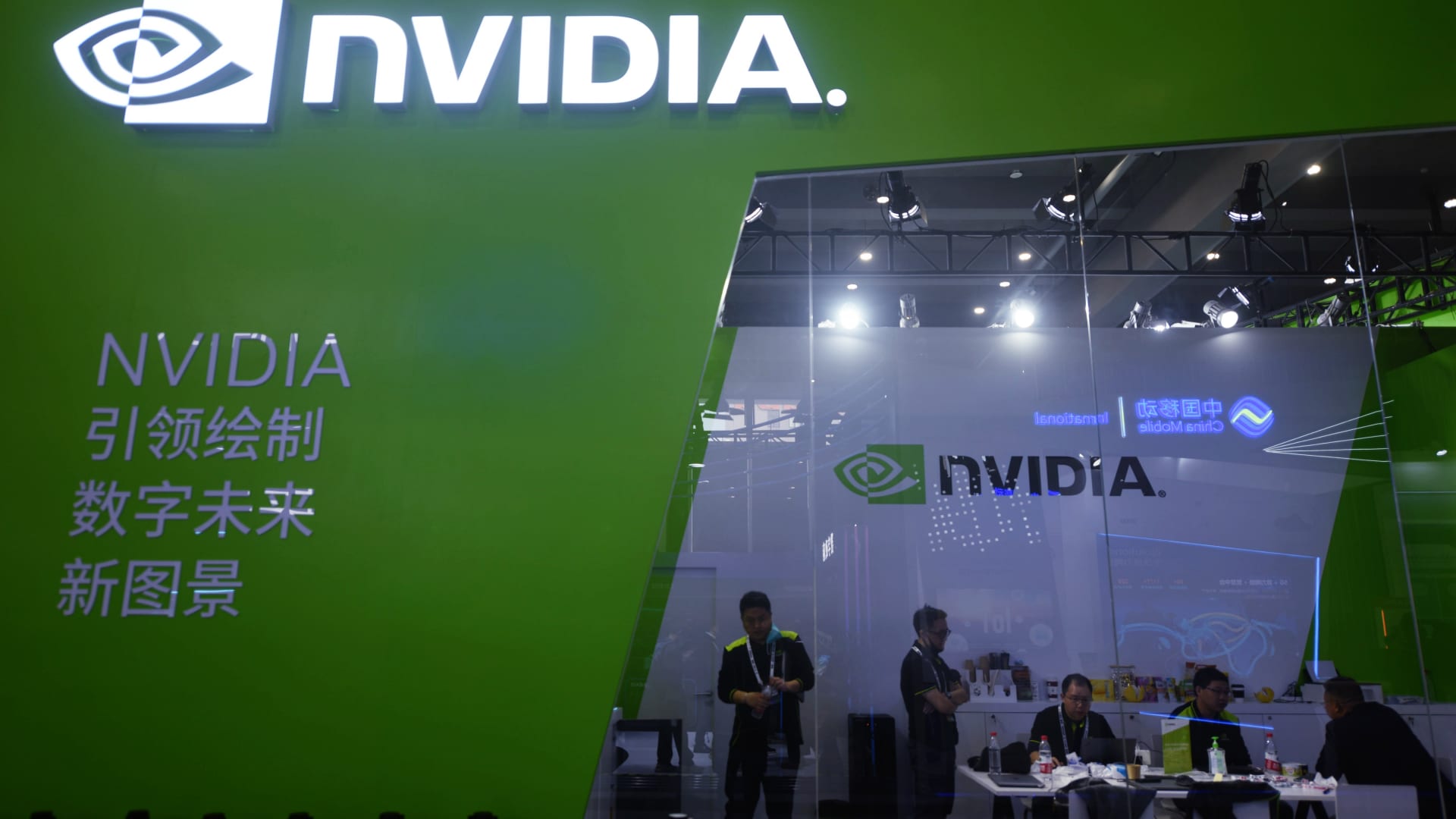
Washington’s tightened grip on artificial intelligence chip sales to China could have long-term implications for Nvidia , 2023’s famed AI darling. Chip stocks sold off earlier this week after the U.S. Commerce Department announced new curbs on AI chip exports to China in a continued effort to slow its access to advanced computing power, and close loopholes that appeared following a ruling last year . Through Wednesday’s close, Nvidia, the dominant AI player, had lost 7% this week, while Advanced Micro Devices and Marvell Technology slumped more than 2%. Some names recovered Thursday. NVDA mountain 2023-10-16 Nvidia’s weekly performance While the latest export restrictions should have little immediate impact, analysts and portfolio managers say a continuation of the Commerce Department rules could dent significant sales opportunities over the long-run for many popular chipmakers, or lead China to retaliate. Already, investors point to actions earlier this year, when Chinese authorities barred operators of “critical information infrastructure” from buying Micron Technology ‘s products, referring to the Boise, Idaho-based maker of DRAM and NAND chips as a “major security risk.” “China is a big market for them,” said Greg Bassuk, chief investment officer at AXS Investments. “This is going to have staying power.” What it means for Nvidia Nvidia said in an SEC filing this week that the latest government curbs could hinder its new product development timeline, and a handful of chip models. The new restrictions extend beyond the latest-generation H100 product fueling many large language models used in artificial intelligence, and will even prevent the sale of less sophisticated H800 and A800 models previously sold in China. The major aim of the latest U.S. restrictions is to prevent China from harnessing advanced semiconductor chips to strengthen its military. But it isn’t the only nation affected, with the ruling adding licensing requirements for countries ranging from Vietnam to Saudi Arabia and the United Arab Emirates. The heightened government limits led some Wall Street investment banks to trim their price targets on shares of Nvidia to account for slowing sales. Citi analyst Atif Malik, for example, cut his Nvidia price objective to $575 from $630 this week, while Morgan Stanley’s Joseph Moore trimmed his target by $30 to $600, saying that restrictions to areas such as Saudi Arabia appear a greater threat to revenue than initially expected. While Citi’s price target adjustment still implies 36% upside from Wednesday’s close, and the bank remains optimistic about Nvidia’s long-term growth potential, Malik also lowered 2026 earnings estimates, citing reduced sales into China data centers. To be sure, Nvidia isn’t the only company slated to feel the pressure from the latest export curbs. Many analysts anticipate Advanced Micro Devices and Intel will feel the pinch, too, among others. In the short-term, AXS Investments’ Bassuk is bracing for volatility and downward pressure on the entire sector as investors study the news and its investment implications. What to expect over the long-term While the near-term impact to Nvidia appears limited, many analysts and professional investors are bracing for a potential bigger hit to earnings and revenues in the future. In one bear case scenario, Bank of America’s Vivek Arya forecasts 5% to 10% downside to Nvidia’s fiscal year 2025 sales and a 8% to 10% hit to EPS than would have otherwise been the case. While robust demand should carry Nvidia into the first half of 2024, JPMorgan Chase is bracing for an impact in the second half of next year. Assuming that the combined China and AI exposure represents 8% of revenues, analyst Harlan Sur projects a 5% impact to EPS in 2024, and as much as 8% in 2025. Nvidia’s datacenter exposure to China, the world’s second-largest economy, hovered at around 20% to 25% over the past few quarters. The restrictions equate to about a third of datacenter revenues, noted Goldman Sachs analyst Toshiya Hari in a recent note. “China’s a big growth market,” said Independent Solutions portfolio manager Paul Meeks. “We have 300 million people here. They have four to five times the population, [and are] much faster growing than we are for all products. We need them to grow.” But cutting ties with China may be easier said than done, given how interconnected supply chains are, Meeks said, pointing to the aftershocks felt across industries in the wake of Covid-19 shutdowns. To be sure, while the latest U.S. ruling may hurt some popular AI chipmakers, not every subsector will feel the pain. Needham’s Charles Shi said in a Wednesday note that he anticipates “minimal” impact to forward earnings for U.S. semiconductor equipment manufacturers and electronic design automation names. And the majority of the negative impact may already be baked into the stocks following 2022’s restrictions, said JPMorgan’s Sur. Freemont, California-based Lam Research seemed to downplay the impact, saying in a Wednesday earnings call that it doesn’t anticipate a “material impact” to the current fiscal year, aside from the $2 billion hit to revenue projected from previous restrictions. But even if the latest rules have staying power among AI-focused names, many investors and analysts remain bullish on the broad outlook for the semiconductor industry. Raymond James analyst Srini Pajjuri notes that AI demand could be strong enough to offset some loss of demand in China, although he expects a potential 10% impact to next year’s earnings. “China is a big market, obviously that’s a lost opportunity for U.S. companies,” he said. ” There’s no question about that.” — CNBC’s Michael Bloom contributed reporting
